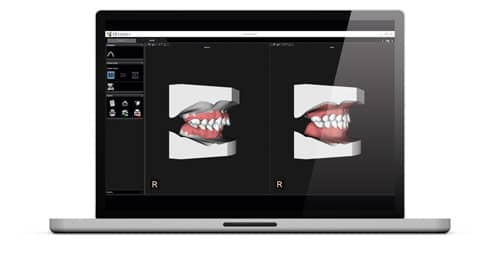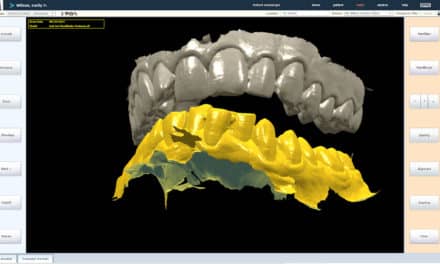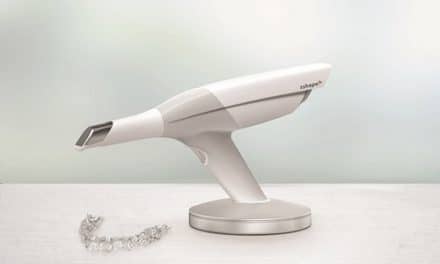
According to a press release from the company, CS Model+ automatically detects, segments, and labels the patient’s dentition using the company’s exclusive technology that allows for the identification of points of interest, such as erupting, supernumerary, or missing teeth. While the key to the software is its automation, orthodontic clinicians still maintain control via a numbers of tools that allow for the manual modification of tooth contour, tooth labeling, mesiodistal orientations, and tooth position wherever needed.
The software also features the ability to assess the level of difficultly of the case from a wide range of common industry standards, including the Bolton discrepancy analysis, Peer Assessment Rating index, and ABO discrepancy index. The software also allows for visual simulations of various treatment options—including extraction, interproximal reduction, archwire—and the resulting occlusion to ensure the desired treatment outcome is met.
CS Model+ compiles all this data into reports that can be generated with the click of a button, according to the company. Reports are based on user preference and can be customized at every level. They can also automatically merge the data from cephalometric tracings in either CS Orthodontic Imaging software or CS Imaging software.
CS Model+ can be accessed directly from the patient’s imaging chart, which keeps all patient records digital and centrally located.
CS Model+ is an expansion of Carestream Dental’s CS Solutions for Orthodontics portfolio, which is designed to give orthodontists the flexibility to customize their workflow.
The software can be used to analyze digital models acquired from either the CS 9300, CS 8100 3D, or CS 8100C 3D imaging systems, or the CS 3600 intraoral scanner.










